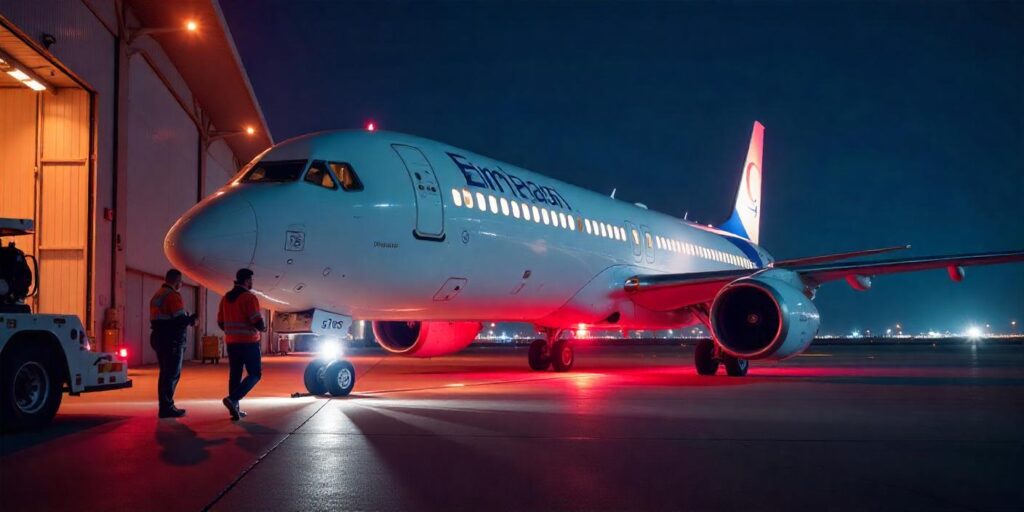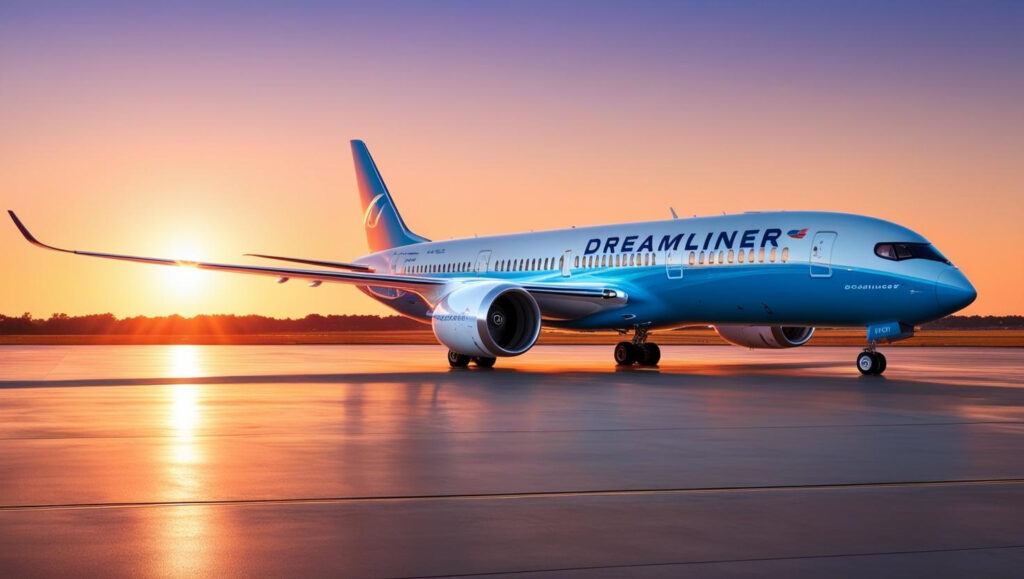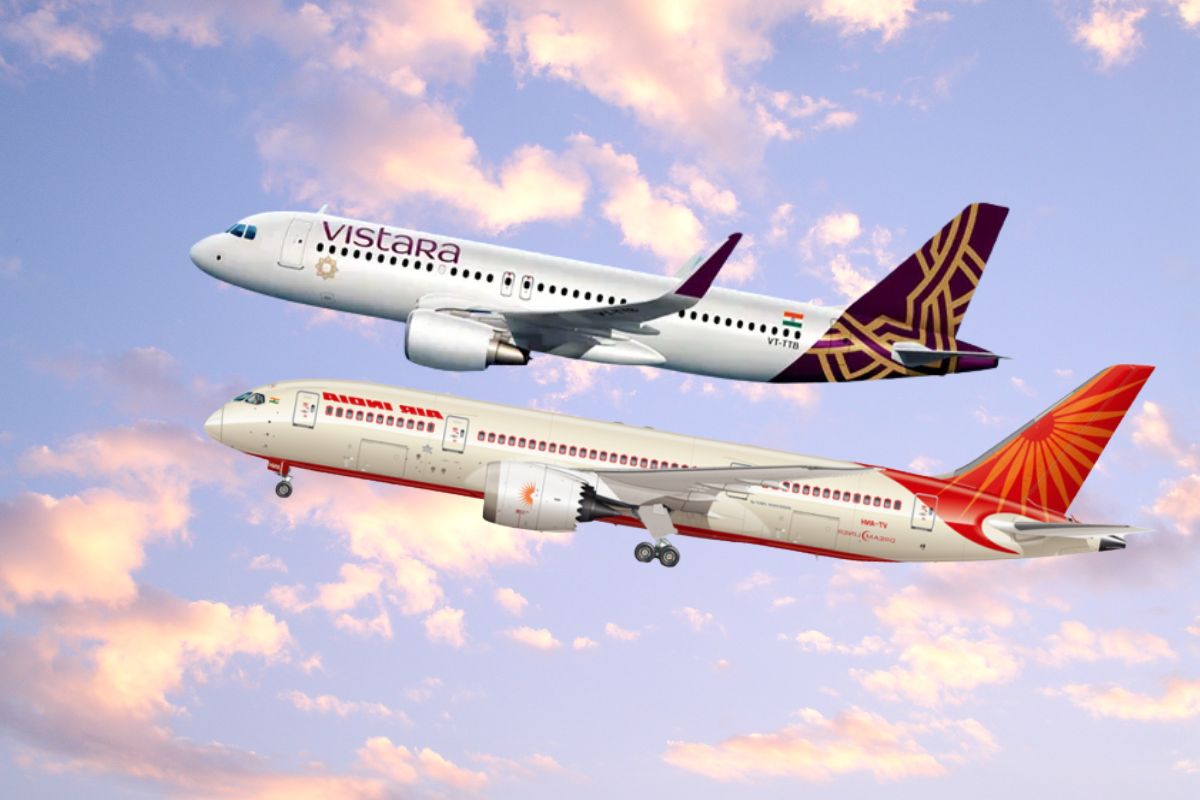This Airline has taken delivery of First Dreamliner aircraft

On January 13, Riyadh Air, Saudi Arabia’s newly launched airline, received its first Boeing 787-9 Dreamliner. However, the aircraft won’t immediately begin commercial operations. Instead, it will serve a specialized role within the airline’s operations.
Riyadh Air has announced that the Boeing 787-9 Dreamliner will primarily be used as a technical spare. This means it will be kept on standby to assist with any technical issues that may arise within the airline’s fleet. Additionally, the aircraft will be used for training purposes, particularly for crew members and ground staff. This training will ensure that the airline’s personnel are fully equipped to handle the advanced technology and systems of the Boeing 787-9 when it eventually enters service.
The airline’s broader goal for the aircraft is to support the process of obtaining the Air Operator’s Certificate (AOC) from the General Authority of Civil Aviation (GACA). The AOC is a critical requirement for any airline to officially begin commercial flight operations. Riyadh Air anticipates receiving this certification later this year, which will allow the airline to launch its scheduled services. This step is a crucial part of the airline’s journey toward full operational status.
Demonstration Aircraft
Riyadh Air’s first Boeing 787-9 Dreamliner will primarily serve as a demonstration aircraft during its initial phase. The airline will use the aircraft to showcase its capabilities and meet regulatory requirements instead of deploying it for commercial operations. This strategic decision highlights Riyadh Air’s commitment to ensuring a seamless launch of its services while adhering to global aviation standards.
As a demonstration aircraft, the Dreamliner will play a pivotal role in the airline’s efforts to secure its Air Operator’s Certificate (AOC) from the General Authority of Civil Aviation (GACA). This certification is essential for the airline to commence commercial operations and validate its operational readiness. The aircraft will facilitate essential evaluations and inspections by regulatory authorities, demonstrating Riyadh Air’s adherence to safety protocols and operational excellence.
In addition to regulatory demonstrations, the aircraft will be utilized for training purposes. It will provide Riyadh Air’s crew and ground staff with hands-on experience in handling one of the most advanced and efficient aircraft in the world. This ensures that the team is well-prepared and proficient in managing the Dreamliner’s systems and operations before commercial services begin.
The use of a demonstration aircraft also allows Riyadh Air to fine-tune its operational procedures, test ground handling processes, and ensure that all technical systems are functioning flawlessly. By investing in this phase, the airline aims to establish a robust foundation for its operations, guaranteeing high standards of safety, reliability, and efficiency.
The Significance of the Dreamliner in Airline Operations

The delivery of the Dreamliner aircraft marks a significant milestone for airlines around the globe, playing an essential role in the evolution of airline fleet upgrades. With the Boeing 787, airlines are refreshing their fleets to stay competitive, enhancing efficiency, and addressing the increasing demand for sustainable air travel. This next-generation aircraft boasts a range of technological innovations, including outstanding features of the Boeing 787, which greatly influence both operational effectiveness and passenger experience.
As airlines continue to modernize their fleets with the Dreamliner, they benefit from more fuel-efficient aircraft that help cut operating costs and reduce carbon emissions, aligning with the aviation industry’s growing emphasis on sustainability. The Boeing 787 stands at the leading edge of air travel innovation, demonstrating how contemporary aircraft can provide not only improved performance but also a more environmentally friendly approach to flying.
Fuel Efficiency and Environmental Impact
The delivery of the Dreamliner aircraft marks a significant milestone for airlines around the globe, playing an essential role in the evolution of airline fleet upgrades. With the Boeing 787, airlines are refreshing their fleets to stay competitive, enhancing efficiency, and addressing the increasing demand for sustainable air travel. This next-generation aircraft boasts a range of technological innovations, including outstanding features of the Boeing 787, which greatly influence both operational effectiveness and passenger experience.
As airlines continue to modernize their fleets with the Dreamliner, they benefit from more fuel-efficient aircraft that help cut operating costs and reduce carbon emissions, aligning with the aviation industry’s growing emphasis on sustainability. The Boeing 787 stands at the leading edge of air travel innovation, demonstrating how contemporary aircraft can provide not only improved performance but also a more environmentally friendly approach to flying.
Passenger Comfort and Cabin Features
The Boeing 787 features are not only about operational efficiency but also focus on significantly enhancing the customer experience. Passengers on a Dreamliner enjoy improved comfort thanks to spacious cabins, larger windows, and quieter engines, making long flights more pleasant. The aircraft’s advanced air filtration system and higher humidity levels also contribute to a more comfortable journey by reducing the effects of jet lag and dryness.
These features are part of the reason why airlines are choosing the Dreamliner as part of their airline fleet enhancement efforts, as they can provide passengers with a superior flying experience. For passengers, the Dreamliner is not just about getting to their destination; it’s about enjoying a smoother, more comfortable journey. As airlines continue to embrace air travel innovation, the Dreamliner’s ability to combine sustainability with passenger-centric design will shape the future of air travel.
The Reception from Passengers and Industry Experts
The reception of the Dreamliner aircraft delivery has been overwhelmingly positive, with both passengers and industry experts praising the aircraft’s advanced Boeing 787 features. From the moment the Dreamliner enters service, passengers notice the improved comfort, enhanced cabin features, and smoother ride, all of which elevate the customer experience to new heights. The larger windows, quieter engines, and improved air quality contribute to a more enjoyable flight, reducing jet lag and fatigue on long-haul journeys. As a result, the Dreamliner has quickly gained a loyal following among travelers, eager to experience its superior in-flight comfort.
Industry experts also recognize the Dreamliner’s role in airline fleet enhancement. With its fuel-efficient design, reduced environmental impact, and cost savings for airlines, the Boeing 787 has set a new standard for commercial aviation. Experts agree that the Boeing 787 features have pushed the boundaries of what’s possible in modern air travel, and the Dreamliner continues to influence the direction of the aviation industry. Many airlines have lauded the aircraft for its combination of sustainability and passenger-centric design, making it a cornerstone of air travel innovation.
Future Plans for the Airline and the Dreamliner
Expanding the Dreamliner Fleet
Airlines that have embraced the Dreamliner aircraft delivery are already making plans to expand their Dreamliner fleets. With the success of the initial Dreamliner models, many carriers are looking to increase their fleet size to meet growing demand for more efficient and comfortable air travel. As airlines focus on airline fleet enhancement, the Dreamliner stands as a reliable and cost-effective solution, offering both operational savings and improved passenger experience. Expanding the Dreamliner fleet will allow airlines to further optimize their operations and meet the needs of the modern traveler.
Investment in Technology and Services
The future of air travel involves continuous investment in technology and services, and the Dreamliner plays a key role in this evolution. Airlines are not only upgrading their fleets but also enhancing their in-flight services to align with the advanced capabilities of the Boeing 787. From improved entertainment systems to personalized customer service, the focus is on creating a seamless travel experience for passengers. As part of their strategy to stay competitive in the fast-evolving airline industry, carriers are increasingly integrating air travel innovation to enhance both operational efficiency and customer satisfaction.


